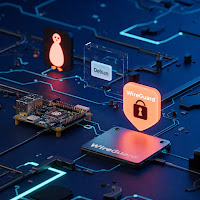Gestión de Imágenes:
docker pull <nombre_de_la_imagen>[:<etiqueta>]:- Descarga una imagen desde un registro (como Docker Hub).
- Ejemplo:
docker pull ubuntu:latest
docker images:- Lista todas las imágenes de Docker almacenadas localmente.
docker rmi <ID_de_la_imagen>:- Elimina una imagen de Docker.
- Precaución: esta acción no se puede deshacer.
Gestión de Contenedores:
docker run [opciones] <nombre_de_la_imagen>[:<etiqueta>] [comando]:- Crea e inicia un contenedor a partir de una imagen.
- Opciones clave:
docker run -d: Ejecuta el contenedor en modo "detached" (en segundo plano).docker run -p <puerto_del_host>:<puerto_del_contenedor>: Asigna puertos entre el host y el contenedor.docker run -v <ruta_del_host>:<ruta_del_contenedor>: Monta un volumen.docker run --name <nombre_del_contenedor>: Asigna un nombre al contenedor.
- Ejemplo:
docker run -d -p 8080:80 nginx
docker ps:- Lista los contenedores en ejecución.
docker ps -a: lista todos los contenedores.
docker stop <ID_del_contenedor> o <nombre_del_contenedor>:- Detiene un contenedor en ejecución.
docker start <ID_del_contenedor> o <nombre_del_contenedor>:- Inicia un contenedor detenido.
docker restart <ID_del_contenedor> o <nombre_del_contenedor>:- reinicia un contenedor.
docker rm <ID_del_contenedor> o <nombre_del_contenedor>:- Elimina un contenedor detenido.
docker exec -it <ID_del_contenedor> o <nombre_del_contenedor> [comando]:- Ejecuta un comando dentro de un contenedor en ejecución.
-itproporciona una terminal interactiva.- Ejemplo:
docker exec -it mi_contenedor bash
docker logs <ID_del_contenedor> o <nombre_del_contenedor>:- Muestra los registros de un contenedor.
Otros Comandos Útiles:
docker search <término>:- Busca imágenes en Docker Hub.
docker version:- Muestra la información de la versión de Docker.
docker info:- Muestra información general sobre la instalación de docker.
Conceptos Clave:
- Imágenes: Plantillas de solo lectura utilizadas para crear contenedores.
- Contenedores: Instancias en ejecución de imágenes.
- Docker Hub: Un registro público de imágenes de Docker.
Con estos comandos básicos, podrás empezar a utilizar Docker de manera efectiva.




